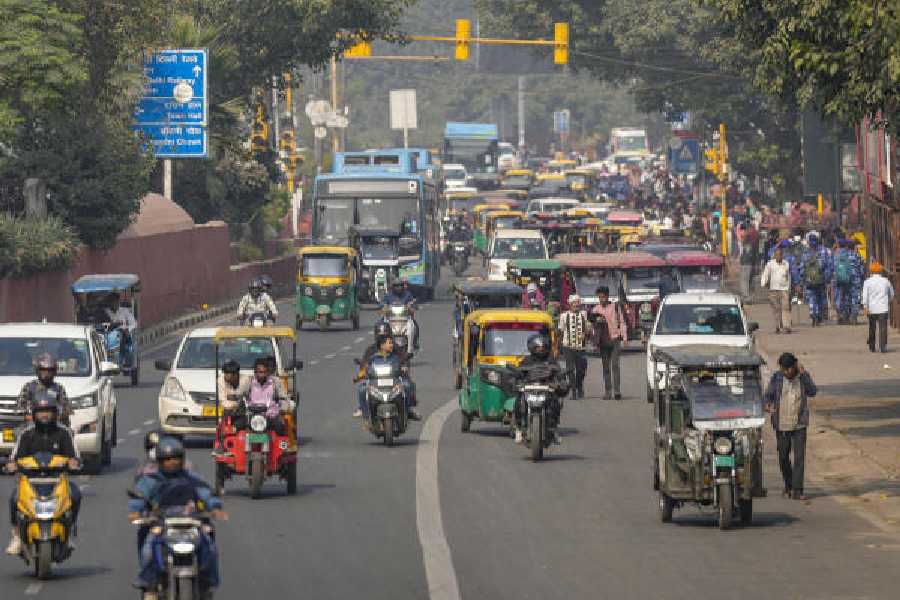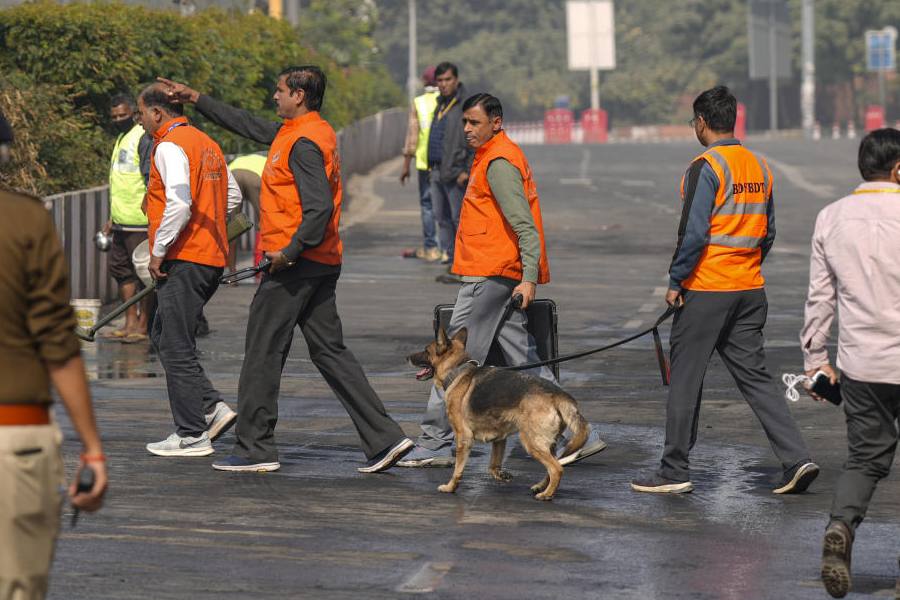To study China is not an act of curiosity but of strategy. India’s future will be shaped by how we interpret China’s evolution — its power, vulnerabilities, ambitions and view of world order. This insight does not come from abstraction but from my
lived experience: of nearly four decades of engagement with China, from the early optimism of reform to the controlled assertiveness of Xi Jinping’s era.
I first arrived in Beijing in 1986 when China was still in the experimental phase of Deng Xiaoping’s reforms. The city of bicycles and grey overcoats had not yet become the steel-and-glass skyline of ambition it is today. China felt like a civilisation breaking out of its enforced isolation, rediscovering motion after decades of turbulence. Dialogue with India had begun tentatively, and there was a genuine belief that both nations, as ancient civilisations and modernising states, could avoid rivalry and rediscover coexistence.
Chinese scholars I met then were curious about India’s democracy. Was diversity a weakness, they asked? No, I would reply — diversity makes governance complex, not weak. China was seeking modernity through discipline and central authority; India through pluralism and argument. These were divergent political traditions, but not irreconcilable ones. Asia, as the historian, Wáng Gongwu, reminds us, is not a theatre of civilisational collision but of ancient exchange. What we lost over time was not compatibility but conversation.
The visit of the former prime minister, Rajiv Gandhi, to China in 1988 marked a reset. A long diplomatic winter gave way to cautious political thaw. Trade expanded. Mechanisms were built to maintain border peace. Dialogue became habitual, even when disagreements persisted. Yet beneath this progress lay an uncomfortable truth: the relationship was structurally asymmetrical. That asymmetry was not only economic or military. It lay in confidence, strategic imagination, and the narratives each country told itself.
The late prime minister, Manmohan Singh, once summarised the working consensus that governed ties for two decades: China is not a threat to India, nor India to China; both have space to grow; each is an opportunity for the other; together they can shape emerging global regimes; and boundary issues must be resolved in a larger strategic context. That understanding preserved peace even without settlement — until Galwan in June 2020 changed everything.
Galwan was not an accident. It was a rupture. It shattered decades of trust painstakingly built since 1988. It revealed that peace cannot rest on ritual or habit; it must rest on intent. Since then, the relationship has entered what I have called “competitive coexistence” — a state of tension without open conflict, dialogue without trust, military disengagement without restored normalcy. The border is now the central and unavoidable issue in
the relationship, and it has shrunk political space between the two countries more than at any time since 1962.
China today is a country transformed. The decentralised, experimental China of the 1990s has given way to a tightly centralised, Party-dominated State. Xi Jinping has fused ideology with nationalism and power with control. China has mastered the tools of State power — technology platforms, industrial scale, surveillance, infrastructure diplomacy — and deployed them for both internal cohesion and global influence. Yet its confidence masks a deeper insecurity. Its leadership fears disorder more than decline. The social contract it offers — prosperity in return for political obedience — has delivered growth but not reassurance.
China’s turn inward — its ‘dual circulation’ strategy, its pressure on private enterprise, its extreme tightening of information space — reflects a guarded and anxious superpower. It seeks resilience, yes, but at the cost of openness. Innovation thrives on contestation; control suppresses it.
Globally, China faces headwinds. The Belt and Road Initiative once symbolised expansive ambition. Today it raises questions — from Sri Lanka to Zambia to Malaysia — where debt, dependency and political leverage have become political issues. Many nations now seek alternatives, not to break with China but balance it. The question before Asia is no longer how to adjust to China’s rise — but how to negotiate with Chinese power.
India’s own evolution has been profound. From non-alignment to strategic autonomy, India now practises a diplomacy of multiple partnerships and independent agency. India engages the United States of America, Japan and Europe through the Quad and other platforms while maintaining long-standing ties with Russia. It engages China, but without illusions. Strategic autonomy is not passive neutrality; it is the freedom to choose, guided by national interest.
Nowhere is this clearer than in the Indo-Pacific. This maritime-continental region is becoming the cockpit of global competition — in commerce, technology and supply chains as much as in naval presence. India’s geography is destiny: we sit astride critical sea lanes and share a contested Himalayan frontier with China. The challenge before Asia is to avoid bipolarity. It must build a stable, multipolar equilibrium where competition coexists with restraint.
But realism demands clarity. Trust between India and China is at a historic low. The 1993 Border Peace and Tranquillity Agreement and its successors prevented conflict for nearly three decades because both sides accepted restraint. That framework has eroded. Until disengagement is complete and peace restored, normal relations will remain impossible.
China’s foreign policy combines ambition with anxiety. Its assertiveness in the South China Sea, its coercive behaviour towards Taiwan, its pressure on Japan, Vietnam and the Philippines, and its militarised posture in the Himalayas come not from confidence but compulsion — to dominate its periphery. But coercion breeds pushback. A confident power builds relationships; a brittle one demands deference.
India must not imitate China’s insecurities. Our response must be steady, not reactive. We must build military preparedness along the Line of Actual Control and maritime partnerships in the Indian Ocean. We must de-risk our economy by reducing critical dependencies on China in technology, telecommunications, pharmaceuticals and infrastructure. But we must also keep dialogue alive because hostility without communication is a recipe for miscalculation.
We must also be clear: trade is not a substitute for trust. Economic interdependence has not moderated China’s behaviour. India-China trade has grown even as strategic friction has deepened. The lesson is obvious — commerce cannot guarantee peace. Only predictability and respect for agreements can.
India now finds itself in a triangular dynamic: with China, the US and Russia. The return of Donald Trump to the White House has reintroduced uncertainty into India-US relations. Washington remains a crucial partner, but America is once again more transactional. India cannot assume alignment; it must earn it through leverage. That makes engaging China — even minimally — part of India’s balancing strategy. Beijing, facing economic slowdown and US pressure, also seeks to stabilise fronts. A limited thaw suits both — but it must be on terms of equality, not acquiescence.
Two other realities cannot be ignored. First, Tibet remains a deep fault line. The question of the Dalai Lama’s succession — when it arises — will reopen a sensitive front in India-China relations. Beijing insists it alone can recognise his reincarnation; Dharamshala insists otherwise. India will be drawn into this moment whether it chooses to or not. Second, China’s partnership with Pakistan is structural, not tactical. It uses Pakistan to tie down Indian military capacity and expand influence in the subcontinent. The China-Pakistan economic and military nexus is now a long-term feature of India’s strategic environment.
In such a world, the most realistic future is managed competition. India and China are not destined for war — but nor are they headed for partnership. We must build mechanisms of stability without illusions of friendship. The goal is not harmony but equilibrium.
The India-China story will not be solved by big breakthroughs. It will be shaped by endurance — by patient negotiation, clear red lines, credible deterrence and a willingness to engage without fear.
Diplomacy, it is said, is life without maps. It is clearing a path through the jungle, like Livingstone searching for Stanley — guided by instinct, surrounded by fog. India and China inhabit this condition more than most. Their frontier is a cartography of lines in the mind that do not meet on the ground: rivers that wander, glaciers that shift. Each insists on its own version of geography; each accuses the other of trespass. To talk is to improvise without coordinates — to build understanding out of ambiguity. India must walk this long road with clarity. The challenge is not to win against China in a single moment but to compete with China across time — with discipline, balance and confidence.
Nirupama Rao is a former Foreign Secretary. The views expressed are personal










